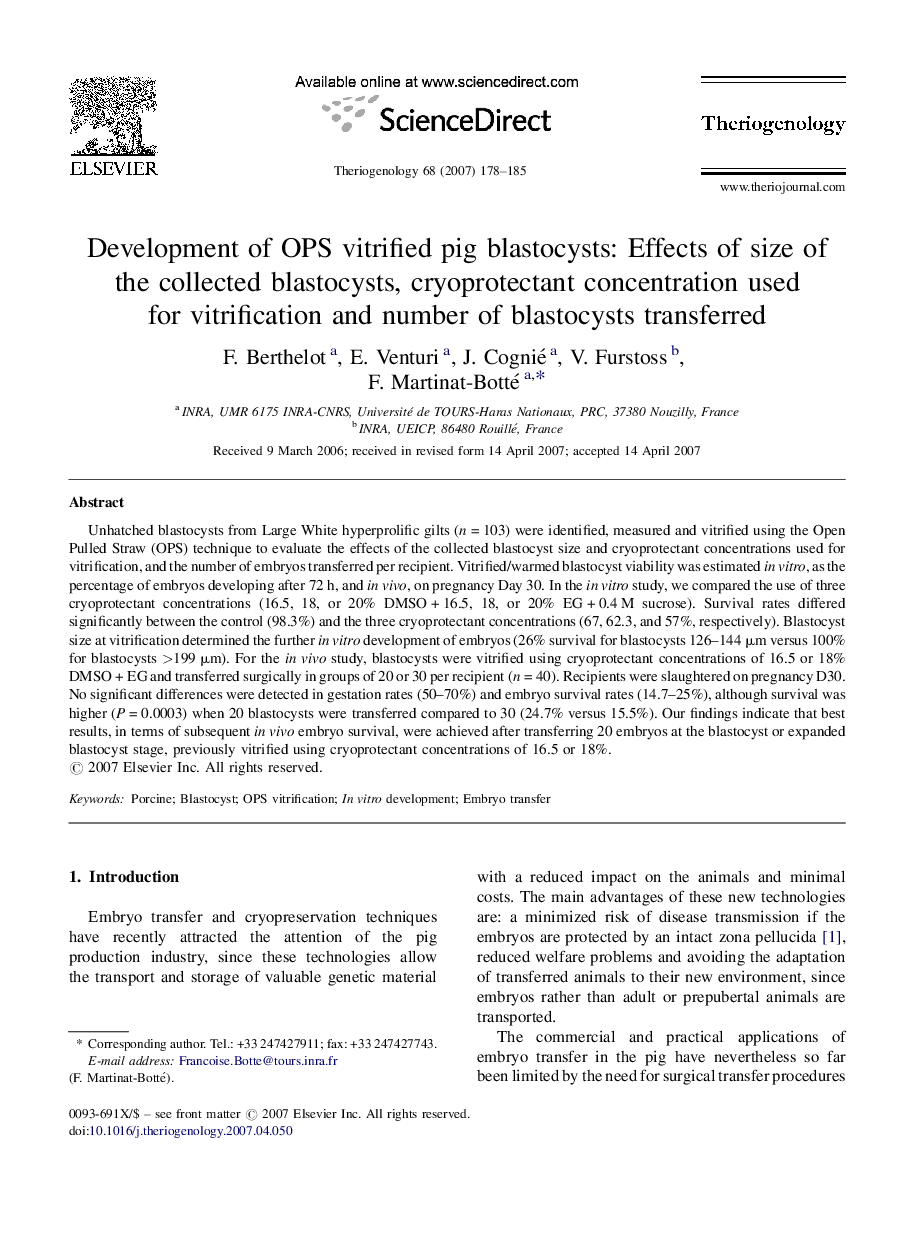| Article ID | Journal | Published Year | Pages | File Type |
|---|---|---|---|---|
| 2096226 | Theriogenology | 2007 | 8 Pages |
Unhatched blastocysts from Large White hyperprolific gilts (n = 103) were identified, measured and vitrified using the Open Pulled Straw (OPS) technique to evaluate the effects of the collected blastocyst size and cryoprotectant concentrations used for vitrification, and the number of embryos transferred per recipient. Vitrified/warmed blastocyst viability was estimated in vitro, as the percentage of embryos developing after 72 h, and in vivo, on pregnancy Day 30. In the in vitro study, we compared the use of three cryoprotectant concentrations (16.5, 18, or 20% DMSO + 16.5, 18, or 20% EG + 0.4 M sucrose). Survival rates differed significantly between the control (98.3%) and the three cryoprotectant concentrations (67, 62.3, and 57%, respectively). Blastocyst size at vitrification determined the further in vitro development of embryos (26% survival for blastocysts 126–144 μm versus 100% for blastocysts >199 μm). For the in vivo study, blastocysts were vitrified using cryoprotectant concentrations of 16.5 or 18% DMSO + EG and transferred surgically in groups of 20 or 30 per recipient (n = 40). Recipients were slaughtered on pregnancy D30. No significant differences were detected in gestation rates (50–70%) and embryo survival rates (14.7–25%), although survival was higher (P = 0.0003) when 20 blastocysts were transferred compared to 30 (24.7% versus 15.5%). Our findings indicate that best results, in terms of subsequent in vivo embryo survival, were achieved after transferring 20 embryos at the blastocyst or expanded blastocyst stage, previously vitrified using cryoprotectant concentrations of 16.5 or 18%.
